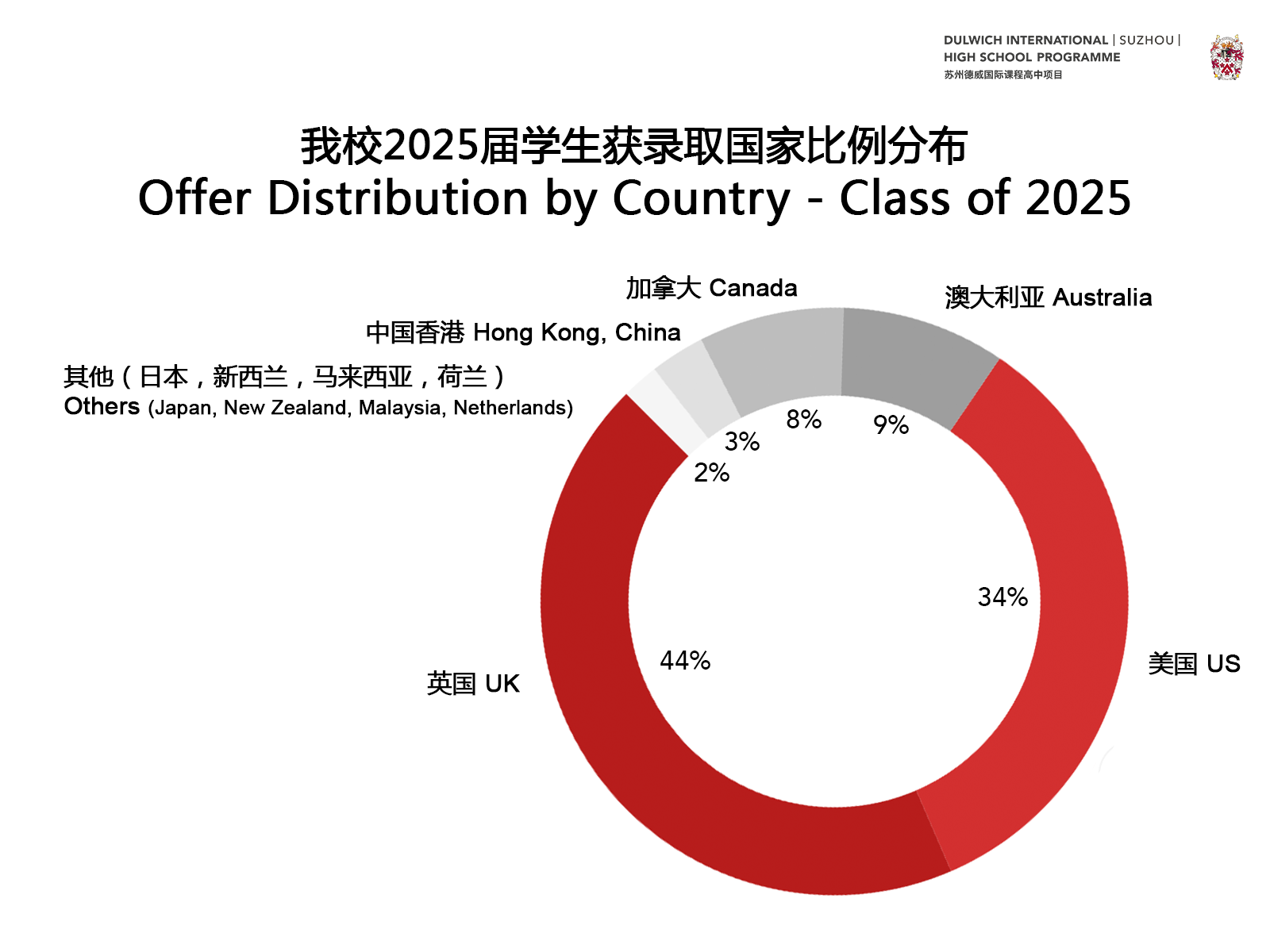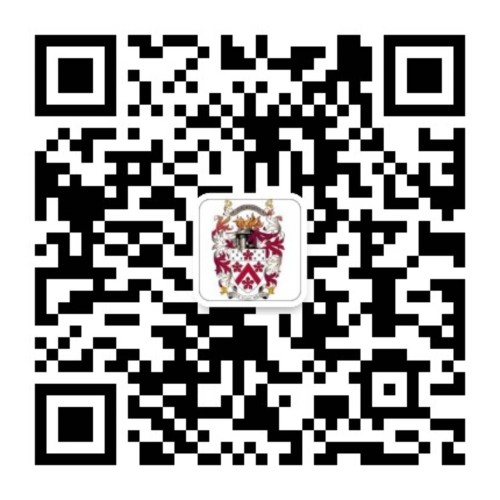Your Guide to Studying in Canada & Australia
Reflecting on this university admissions season, we’ve explored a broad range of topics — from ED and EA strategies and applications to universities in Hong Kong, to the University of California system, admissions to arts-related programmes, scholarship planning, and how to find the BestFit university. All were designed to help students and families gain a clear, comprehensive view of the university application landscape. As the final feature in this series, we turn our attention to two increasingly popular destinations: Canada and Australia. We invited counsellor Ms Sophia Chen to share practical advice and thoughtful insights, drawing on the latest admissions data from our school, standout student cases, and her extensive professional experience.
Overall Landscape: Applications and Admissions for Canada and Australia
As of this week, our 164 graduates from the Class of 2025 have received a total of 890 offers. The UK and the US remain the most popular destinations, together accounting for approximately 80% of all offers. However, interest in Canada and Australia has grown rapidly: students applying to these two countries this year represent nearly 20% of the cohort, with their offers comprising around 17% of the total.
This trend suggests that many students are no longer limiting themselves to the UK and the US; instead, they are pursuing multi-country application combinations such as “UK–US–Canada”, “UK–Hong Kong, China–Australia”, or even “UK–US–Australia–Canada”. This approach helps to diversify application pathways and mitigate risk.

Why Are More Students Choosing Canada and Australia?
- High-Calibre Education Systems
Canada and Australia both boast world-class, research-intensive universities with strong international reputations. This year, for example, our students received offers from leading Canadian institutions—McGill University, the University of British Columbia (UBC), and the University of Toronto—as well as from top Australian universities such as the University of Melbourne, the Australian National University (ANU), the University of Sydney, and the University of New South Wales (UNSW). These universities not only consistently rank among the world’s best, but also offer a wide range of courses and excel in both teaching and research.
In terms of academic preferences, our students applying to Canada have been primarily drawn to STEM subjects—such as Computer Science, Engineering, and the Fundamental Sciences—as well as Business-related disciplines. By contrast, those applying to Australia have chosen a broader range of fields, including Engineering, Education, and even Zoology.
- Stable and Welcoming Environments
Canada and Australia both rank highly on measures of social stability and personal safety, and they maintain inclusive policies towards international students. Their employment and immigration pathways are comparatively open, factors that strongly appeal to students and families considering long-term overseas residency. Take the Canadian Co-op programmes, for instance: they provide paid, career-relevant work placements that substantially enhance graduates’ competitiveness in the local job market.
- Flexible, Student-Centred Curricula
Both countries emphasise flexibility and personalisation in their degree structures. Many Canadian institutions allow students to take general education courses in their first year, declaring a major only in their second year; this enables students to explore their interests before committing to a particular discipline. In Australia, certain universities offer combined-degree options and cross-disciplinary electives, providing students with greater academic freedom. Additionally, the application processes in both Canada and Australia are relatively straightforward and transparent, making them more accessible to applicants.
From the Students
To illustrate the thought processes and strategies involved in applying, we interviewed two Class of 2025 students who secured offers from prestigious institutions in Canada and Australia: May L and Luke Y.
May L Y13 - Mathematics and Statistics, University of British Columbia (UBC), Canada
May identified both the UK and Canada as her primary targets at the start of the application season, while also applying to several universities in Hong Kong, China. Ultimately, she received offers from UBC, the University of Toronto, King’s College London, and Durham University. She chose UBC in the end.
Why Canada? Why UBC?
“I chose Canada partly because its comprehensive universities rank highly on the global stage, offering abundant career opportunities after graduation; and partly because, in my first year, I could explore other courses before settling on a single major. I selected UBC because I have family in Canada and hope to work and live there in the future.”
May emphasised that the broad-based curriculum offered by Canadian universities allowed her to sample multiple disciplines in her first year, helping her to confirm her ultimate academic focus. Furthermore, UBC’s Mathematics and Statistics programme is consistently ranked among the best in North America, and with family support on the ground, May felt confident in her decision to attend UBC.
Timeline and Application Approach
“I submitted my UK applications via UCAS at the end of October. Afterwards, I applied to the University of Toronto. Throughout the process, I drafted a core personal statement for UCAS, then tailored and revised it for each Canadian university application.”
By early December, May had already received her UBC offer—an experience that underscored the importance of early preparation and application submission.
Advice for Lower School Students
“Firstly, you need to identify which subjects or majors truly interest you and pinpoint your long-term goals. Only then can you choose countries and universities that suit your aspirations. Plan your application timeline as early as possible, and whenever you encounter uncertainties, seek guidance from our counsellors. This way, you can resolve issues swiftly and effectively.”
Luke Y Y13 - Engineering, University of New South Wales (UNSW), Australia
Luke applied to the University of Melbourne, the University of Sydney, UNSW, and the University of Queensland, receiving offers from all four. After weighing his options, he ultimately selected UNSW’s Engineering programme, citing the university’s strong reputation in engineering—both within Australia and globally—and the fact that its September intake aligns more closely with the domestic academic calendar, enabling a smoother transition to university life.
“I plan to pursue practical engineering projects in Australia after graduation. UNSW excels in engineering innovation and entrepreneurship, offering numerous internship opportunities in collaboration with local firms. Additionally, Australia’s post-study work visa policies are comparatively clear, which accelerates career planning; in these respects, UNSW is a tremendous fit for me,” said Luke.
Ms Sophia also highlighted a common misconception: many students and parents assume that all Australian universities admit only in February of the second year, whereas, in reality, a number of institutions offer autumn intakes (July or September). These later entry points enable students to align more closely with our domestic academic schedules, reducing potential downtime between high school and university.
Advice from Ms Sophia
- Balance Academic and Language Preparation
Maintain strong academic performance, with particular focus on the core subjects valued by universities in the target country.
Plan ahead for language proficiency tests (such as IELTS or TOEFL), aiming to meet or exceed the required scores in a single sitting. Doing so allows ample time for drafting personal statements and preparing for interviews.
- Start Early, Conduct Thorough Research, and Apply Strategically
Encourage students to begin researching target countries and institutions as early as possible, familiarising themselves with application requirements, degree offerings, and intake schedules.
Based on individual interests and career aspirations, students should develop a “main application plus backup” strategy. Both Canada and Australia offer multiple entry cycles and possess specialised strengths; a diversified approach can help mitigate risk.
- Make Full Use of Counselling Resources
Our university counselling team provides one-to-one support with timeline planning, subject selection, personal statement editing, interview preparation, and more.
If students or parents have questions about university choices, personal statements, or document preparation, they are welcome to book an appointment with our counsellors at any time to adjust their application strategy as needed.
- Consider Programme Features, Employment, and Immigration Policies
Canada’s Co-op programmes and Australia’s post-graduation work visa schemes are major advantages of studying in these countries.
Beyond general rankings, students should consider factors such as the industry connections of specific departments and the feasibility of securing employment or pursuing immigration pathways locally after graduation.
As Ms Sophia notes, “Studying abroad is not merely about attending a prestigious university; it is an opportunity to rediscover yourself and to see the world from a broader perspective. Students and parents should reflect together on why they are embarking on this journey: Is it for academic advancement? Career development? Or personal growth? With clarity of purpose, the application process becomes more focused, and the goals more resolute.”
With clear direction, thorough planning, and early action, every student can stand out in the highly competitive arena of international admissions and pave the way to a brighter future. DHSZ will continue to walk alongside students and parents, providing unwavering support to help each Dulwich student find the path that suits them best.






